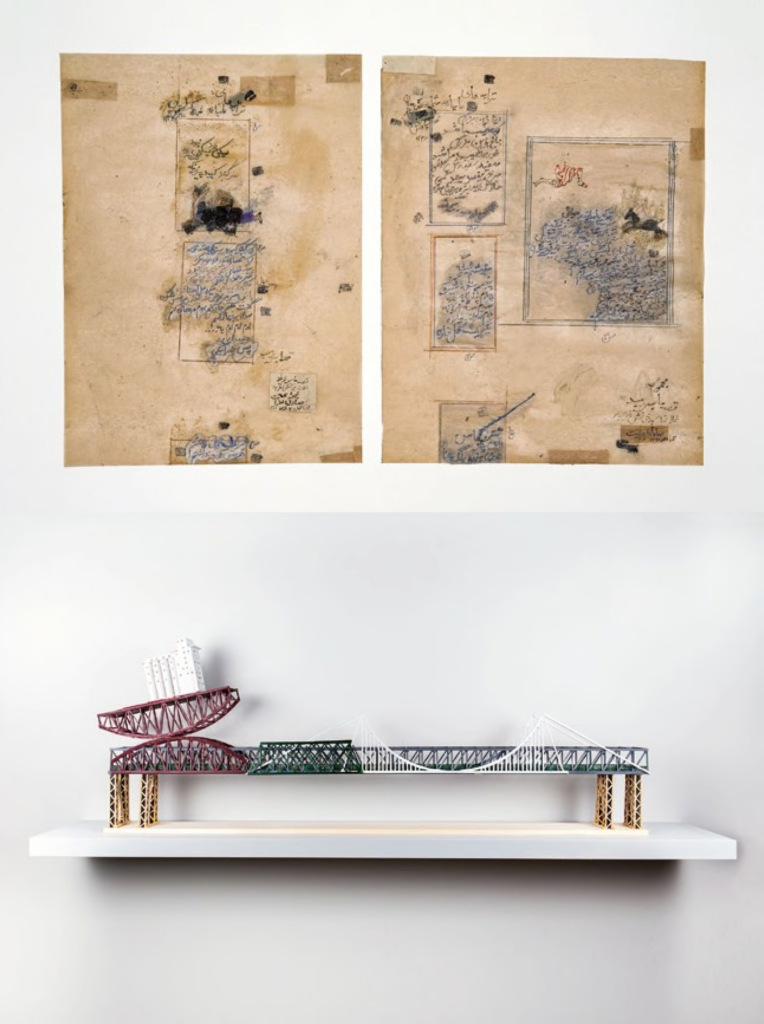Born 1939 in Lahijan, Iran, died 2020 in Minneapolis, MN, United States
Selected works
1957-2016
Iranian-American artist Siah Armajani is best known for public structures—reading rooms, gardens, lounges, and gazebos—that encourage civic assembly, dialogue, reflection, and contemplation. Among his most notable public works are the Irene Hixon Whitney Bridge (1988) in Minneapolis, where he lived and worked until his death in 2020, and Bridge, Tower, Cauldron, which housed the flame at the 1996 Summer Olympics in Atlanta. Harboring artistic ambitions from a young age, Armajani studied for a time with a master painter and calligrapher. His earliest works, completed while he was still a university student in Tehran, are unruly subversions of traditional Persian book art. In place of measured calligraphic strokes are hasty, improvised scribbles akin to handwriting or graffiti, tricky even for those fluent in Farsi to read. Ghostly echoes of familiar figures haunt the negative spaces, often intruding into and obscuring parts of texts haphazardly scattered across the page, which juxtapose the writings of canonical and modernist Persian poets with slogans, talismans, and other popular written ephemera.
In 1960 Armajani’s father sent him to stay with an uncle who taught at Macalester College in Saint Paul. Armajani continued to work with Farsi after his arrival in the US, completely filling shirts and canvases with lines of indecipherable script. In Poetry (1965), words and sentences, rather than conveying meaning, function like brushstrokes in a monochrome composition. At Macalester, Armajani studied philosophy and mathematics, the latter possibly instigating a shift in his artistic vocabulary from the calligraphic to the typographic and computational that defines his conceptual works of the late 1960s and early 1970s, which feature programing code and dot-matrix print. This transition is apparent in Three Pears (1966–67) where the fruit—an often repeated reference to early still-life exercises also seen in Dictionary of Numbers (1957)—is embedded in a neat grid of stamped English letters.
By the late 1960s, Armajani had begun applying his irreverent deconstructive approach to the vernacular wooden architecture that surrounded him in the American Midwest, remixing its language into playful compositions—both as scale models and the public artworks for which he is renowned. Drawn to the simplicity and self-evident construction of such architecture, especially bridges and houses, he continued to reference it for decades to follow. In House with a Golden Chimney (1975), a toy house blocks passage across a trussed bridge, its gilded chimney adding a whimsical accent. In Kansas City Bridge No.2 (2016), various types of bridges are jumbled together. Forgoing function, the logic of these architectural propositions is always more poetic than semantic.



